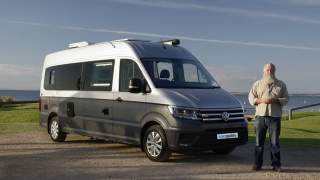The sale of hybrid electric vehicles continues to climb as automakers prepare to phase out vehicles powered solely by internal-combustion engines and buyers around the world embrace more efficient, eco-friendly options.
Research by JP Morgan suggests that by 2025 hybrid cars will represent a whopping 23 per cent of all vehicles sold worldwide.
The power of hybrids lies not just in the combination of their conventional engines with an electric motor, but their ability to provide that perfect safety net for those buyers still anxious about the range offered by purely electric alternatives.
They are like that pair of flats you carry in your bag for when your heels start to pinch on a night out.
So, how do hybrid electric vehicles work?
Hybrid Electrical Vehicles (HEV) use a conventional internal-combustion engine together with an electric motor to drive the vehicle.
For the driver, there is very little difference, as the systems tend to work independently, so the car drives like other vehicles and still uses either petrol or diesel (although hopefully significantly smaller amounts).
The wheels can be powered by the engine, the electric motor alone or by a combination of the two. The electric motor is charged by capturing energy generated during braking and by the combustion engine.
Generally, the electric motor helps acceleration from standstill and provides an extra boost when needed, while its battery powers the car at idle, which means a smaller combustion engine can be used.
This engine can also be tuned for efficiency rather than power or torque (using the Atkinson combustion cycle rather than the traditional Otto cycle), thus improving fuel consumption and saving money.
While hybrid electric vehicles are among the most fuel-efficient cars on our roads, they are less advantageous at highway speeds, where the additional weight of the vehicle and the reduced need for regenerative braking impact overall efficiency.
What about plug-in hybrids?
Plug-in Electric Hybrid Vehicles (PHEVs) work in much the same fashion as regular hybrid vehicles, with the additional option of recharging the batteries via an external power source.
They have significantly larger batteries than HEVs and can be driven further in full-electric mode. They are the middle ground between conventional hybrids and fully electric vehicles.
Recharging is usually through a household powerpoint (taking around four to eight hours for a full charge), special faster wall boxes (two to four hours) and, rarely, some have the ability to use the super-fast public recharging network for charging times in half an hour or less.
PHEVs are quiet, efficient and, in electric mode, produce reduced emissions, but they are also expensive and require the inconvenience of both charging and refuelling to extract the optimum benefits.
Oh, and there's one more option...
You can also have a range-extender hybrid. In this case, the combustion engine never really propels the car. Instead, it is used to power a generator, which in turn recharges the batteries that power the electric motor that drives the wheels, like an EV. The now-discontinued BMW i3 range extender is an example of this, but Nissan’s current e-Power tech works on the same principle, driving the wheels only electrically, using the engine as a power source.
Choosing a hybrid vehicle
Hybrids make sense, and not just for the environmentally conscious. They allow you the best of both the combustion and electric-vehicle worlds in packages that rival their more conventional counterparts.
Range anxiety is no longer an issue as they can charge their own batteries and you can also choose between maximum efficiency and performance, depending on your preference and driving conditions.
The up-front costs are usually greater but electric motors are efficient converters of energy, offer excellent torque and zero tailpipe emissions, which means efficiency without compromising on power.
HEVs and PHEVs are best over shorter distances or for drivers that make multiple stops, like dropping the kids at school, then going to work, then the shops and activities and back home. This allows the best use of the regenerative-braking technology, increasing efficiency and overall benefits.
Boot space is sometimes reduced because batteries need to be accommodated, so make sure you account for your needs. Owners of plug-in hybrids will need access to parking in order to recharge, although you could use a public charging station if you don't have a garage at home.
Best hybrid cars in Australia
The increasing uptake of hybrid vehicles by Australian buyers has encouraged car manufacturers to improve choice by making more models available.
While the Toyota Prius and Mitsubishi Outlander PHEV, among the first hybrid cars in Australia, are probably the most well-known hybrids on offer, there is actually a wide selection of HEVs and PHEVs from which to shop, with a bevy of exciting variants on their way. Here are the best on the market.






































Comments